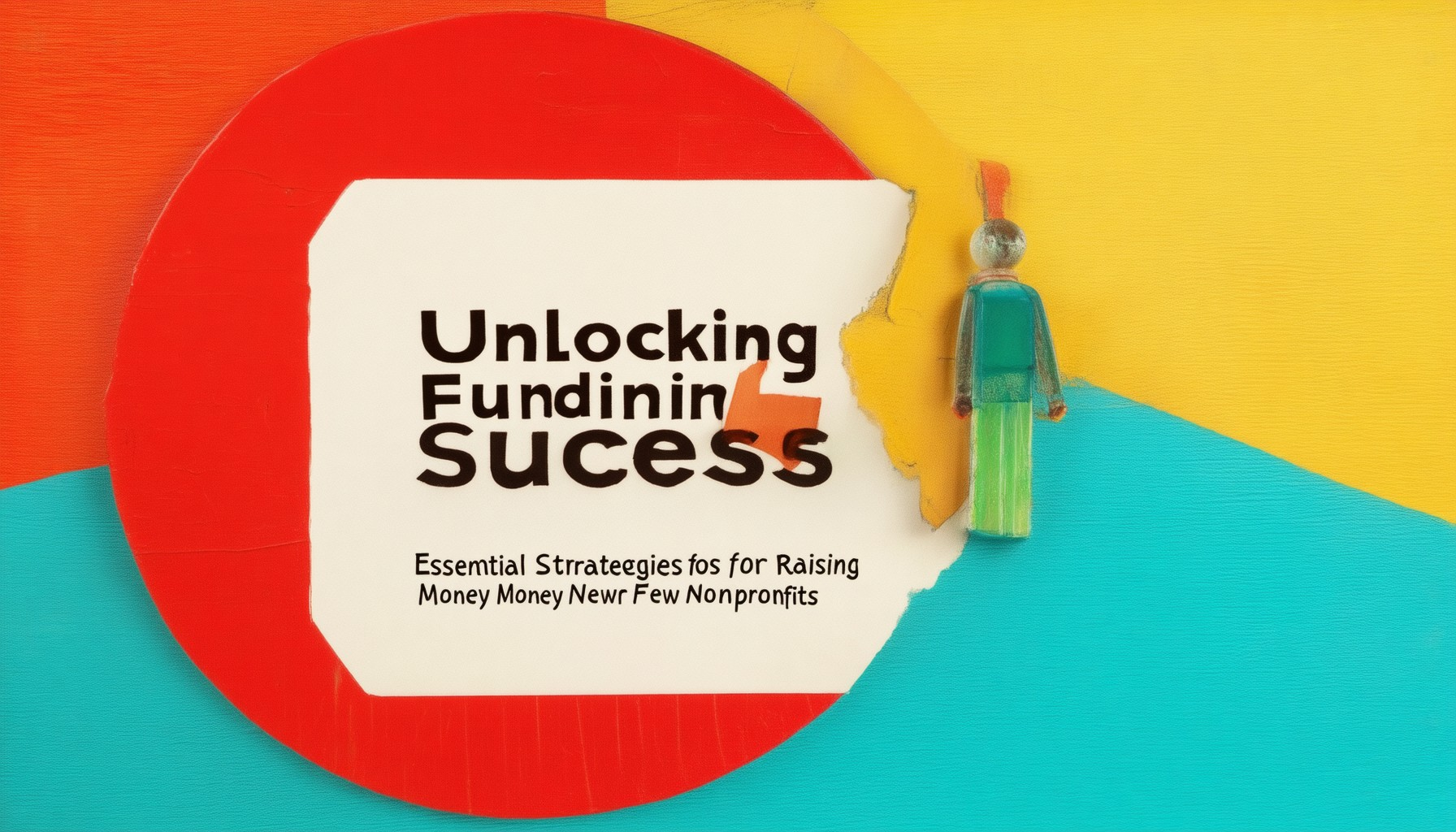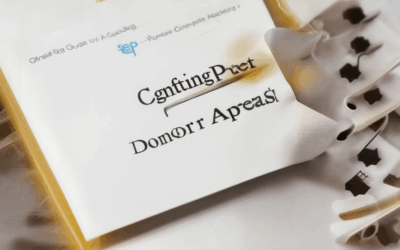Securing funding for a new nonprofit organization can feel like navigating an intricate maze, where every step requires careful planning and strategic thinking. With limited resources and competing priorities, many nonprofit leaders wonder how they can effectively raise funds while maintaining their mission-driven focus. Whether you’re just starting out or looking to expand your current fundraising efforts, understanding the best practices and strategies tailored to new nonprofits is essential for long-term success. This guide delves into proven fundraising techniques, explores the nuances of nonprofit financing, and provides actionable insights to help you unlock funding success. From leveraging digital tools to building lasting relationships with donors, we’ll cover everything you need to know to sustain and grow your nonprofit organization.

How Do New Nonprofits Get Funding?
To secure funding for new nonprofits, organizations can explore various strategies and resources. Here’s a structured approach to obtaining financial support:
- Identify Funding Sources
- Private Foundations : These are often the primary source for nonprofit startup grants. They include individual, family-run, and community foundations. Community foundations, in particular, focus on supporting local initiatives, making them a great starting point.
- Federal and State Grants : Explore programs offered by government agencies like the National Endowment for Democracy or state-level grants. These may require extensive applications and meet specific criteria.
- Corporate Grants : Many companies allocate funds to nonprofit partners through CSR (Corporate Social Responsibility) programs. Reach out to businesses in your community or industry for potential sponsorship.
- Foundation Centers : Utilize intermediary organizations like foundation centers that connect nonprofits with multiple funding sources. These centers often provide resources and workshops to help organizations succeed.
- Apply for Grants
- Research and identify grant opportunities through databases like grant databases . Many foundations publish their funding guidelines online, so tailor your application to match specific criteria.
- Prepare thorough proposals that include your organization’s mission, goals, and budget. Highlight your unique value proposition and demonstrate how the funds will be utilized effectively.
- Network with grant officers and foundation representatives to gain insights and improve your chances of securing funding.
- Crowdfunding and Online Platforms
- Use platforms like Kickstarter or Indiegogo to raise funds from individual donors. Create compelling stories and videos to engage potential supporters.
- Leverage social media to promote your campaign and reach a wider audience. Share your progress and thank your contributors to build trust and loyalty.
- Consider peer-to-peer fundraising, where friends and allies can contribute and help spread the word about your cause.
- Build Strategic Partnerships
- Partner with established nonprofits or NGOs that share your mission. Collaborations can open doors to shared resources, joint initiatives, and co-funding opportunities.
- Seek sponsorships from local businesses or event organizers. Offer them visibility, marketing benefits, or exclusive partnerships in exchange for their support.
- Collaborate with volunteers and interns who can contribute skills and expertise to help grow your organization.
- Leverage Resources and Networks
- Join nonprofit associations and networks, such as nonprofit networks , to access mentorship, training, and funding opportunities.
- Attend conferences and events focused on philanthropy and nonprofit development to connect with potential funders and learn best practices.
- Engage with mentors and advisors who can provide guidance on fundraising strategies and organizational growth.
By exploring these avenues, new nonprofits can secure the necessary resources to establish their missions and create lasting impact.
The 33% Rule for Nonprofits
The 33% rule for nonprofits pertains to the percentage of support received from the general public or government entities. Here’s a breakdown:
- Threshold Definition : Nonprofits are categorized based on the percentage of their total support originating from the public or government. Specifically, if an organization receives more than 10% but less than 33.333…% (one-third) of its support from these sources, it may qualify as a public charity under certain conditions.
- Public Charity Classification : To maintain public charity status, the nonprofit must demonstrate that, considering all facts and circumstances, a substantial portion of its support comes from public sources. This is typically documented on IRS Form 990, particularly in Schedule A and Schedule B, which detail contributions and grants.
- Compliance and Consultation : Nonprofits falling into this range should consult tax professionals to ensure compliance with IRS requirements. Proper classification is crucial to avoid penalties and maintain tax-exempt status.
This rule underscores the importance of understanding funding sources and ensuring adherence to IRS guidelines for nonprofits.

How to Raise Funds for Nonprofit Organizations
To successfully raise funds for your nonprofit organization, consider implementing a multifaceted strategy that leverages various fundraising methods and tools. Below are proven approaches to secure the necessary resources:
- Recurring Donations : Establish a reliable stream of income by encouraging donors to set up recurring contributions via platforms like DonorBox or GiveButter . These platforms simplify the process and allow donors to support regularly.
- Special Events : Organize engaging events such as galas, marathons, or auctions to mobilize donations. Partner with local businesses to offset costs and attract more attendees. Platforms like Bidding for Good can help manage auction events effectively.
- Corporate Matching Gifts : Encourage donors to check with their employers for matching gift programs. Utilize platforms like Double the Donation or Network for Good to simplify the process.
- Grant Applications : Apply for grants from foundations aligned with your mission. Resources like the Grants.gov database and National Endowment for the Arts website can guide you through the application process.
- Crowdfunding Campaigns : Launch campaigns on platforms like Kickstarter or Indiegogo to engage a broader audience. Create compelling stories and videos to attract contributors.
- Major Gifts and Sponsorships : Seek out large-scale contributions from individual donors or foundations. Attend networking events and conferences to build relationships with potential contributors.
- Diversified Funding Strategy : Combine multiple strategies to reduce reliance on any single source of income. Regularly communicate with donors to maintain engagement and encourage continued support.
- Utilize Digital Tools : Implement Customer Relationship Management (CRM) systems like Salesforce or DonorPerfect to manage donor information and track contributions.
- Optimize Online Presence : Ensure your nonprofit’s website and social media channels are optimized for search engines with relevant keywords and high-quality content. Regular blogging about achievements and updates can attract new donors.
- Form Strategic Partnerships : Collaborate with other organizations, influencers, or causes to expand your reach and potentially double your impact.
By integrating these strategies, your nonprofit can build a robust funding base and sustain its operations effectively.

What is the 80/20 Rule in Fundraising?
The 80/20 rule, also known as the Pareto principle, applies to fundraising by suggesting that a small percentage of donors (20%) can account for a significant portion of contributions (80%). This principle emphasizes the importance of focusing efforts on a targeted group of supporters who have the potential to make substantial impacts.
- Donor Segmentation: Nonprofits should identify and segment their donor base to better understand which individuals or groups are most likely to contribute significantly. By focusing on high-potential donors, organizations can maximize their fundraising outcomes.
- Major Donors: Typically, these are individuals or families with the capacity to make large donations. Cultivating relationships with these donors through personalized attention and exclusive opportunities can yield the highest returns.
- Broad Base of Supporters: While 20% of donations may come from a small group, the remaining 80% can be sourced from a larger pool of individual donors. Engaging these contributors through targeted campaigns and regular communication helps sustain overall funding.
To effectively implement the 80/20 rule, consider the following strategies:
- Donor Research: Utilize tools and resources to identify potential major donors within your network or database.
- Cultivation Efforts: Develop tailored approaches to engage and retain these high-capacity donors, including personalized appeals and exclusive events.
- Acknowledgment and Impact: Regularly recognize and acknowledge the contributions of all donors, whether they are part of the 20% or the 80%. Sharing stories of how their support makes a difference can inspire further contributions.
By prioritizing the 80/20 rule, nonprofits can streamline their fundraising strategies, allocate resources more efficiently, and build stronger relationships with their most valuable supporters. This approach not only enhances fundraising success but also strengthens organizational sustainability.
The Three C’s of Fundraising
The three primary components essential for effective fundraising are often referred to as the “Three C’s”: Communication, Organization, and Relationships.
- Communication :
Effective communication is vital in fundraising. It involves clearly articulating the organization’s mission, goals, and financial needs to potential donors. Clear and compelling messaging helps in securing contributions and building trust with stakeholders. - Organization :
A well-organized fundraising strategy ensures that all efforts are coordinated and focused. This involves establishing defined roles, setting measurable objectives, and maintaining accountability to maximize the impact of fundraising activities. - Relationships :
Building and nurturing relationships with donors is fundamental to long-term success. Regular engagement through personalized interactions, updates, and appreciation events strengthens donor loyalty and increases the likelihood of future contributions.
By focusing on these three areas, organizations can significantly enhance their fundraising outcomes and achieve their philanthropic goals.

The Rule of 7 in Fundraising
The Rule of 7 is a fundamental principle in fundraising that emphasizes the importance of consistent donor engagement. It suggests that donors should be contacted approximately seven times within one year following their initial contribution. This approach helps in building lasting relationships and increasing the likelihood of future donations.
Why the Rule of 7 Matters
- Building Trust: Regular communication fosters trust between donors and the organization, making them more likely to support future initiatives.
- Increasing Donor Loyalty: Consistent engagement keeps donors engaged and invested in the mission of the organization.
- Maximizing Impact: By maintaining regular contact, nonprofits can better understand donor preferences and tailor their appeals accordingly.
How to Implement the Rule of 7 Effectively
Adopting the Rule of 7 requires a strategic approach to donor communication. Here are some practical steps:
- Personalized Communication: Tailor messages to individual donors based on their interests and past contributions.
- Regular Updates: Provide updates on how their donations are being used, showcasing the tangible impact of their generosity.
- Engagement Strategies: Use a mix of email, phone calls, and events to maintain consistent contact without overwhelming donors.
- Tracking Interactions: Keep records of all communications to ensure a minimum of seven meaningful interactions within the specified timeframe.
Conclusion
The Rule of 7 is a proven strategy for fostering long-term donor relationships and securing ongoing support for your nonprofit organization. By consistently engaging donors through meaningful interactions, you not only strengthen your donor base but also lay the groundwork for future philanthropic contributions.





0 Comments